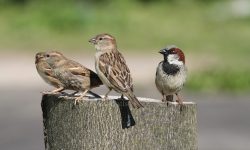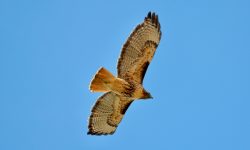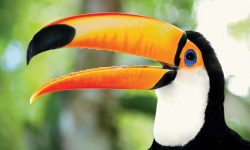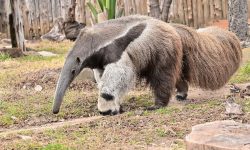Introduction: A Bird Born of Pine and Isolation
In the dry, open forests of southern Idaho, a small, flame-colored finch sings a story written in cones and carved by time. The Cassia Crossbill (Loxia sinesciuris) is no ordinary bird. Found nowhere else on Earth but in a handful of Idaho’s lodgepole pine woodlands, it represents one of North America’s most fascinating evolutionary tales—where ecology, geology, and biology converge in a remarkable act of natural specialization.
This isn’t just another subspecies—it’s a true endemic, a bird that has diverged so completely from its relatives that it now stands as a distinct species, shaped by a unique enemy and a singular food source.
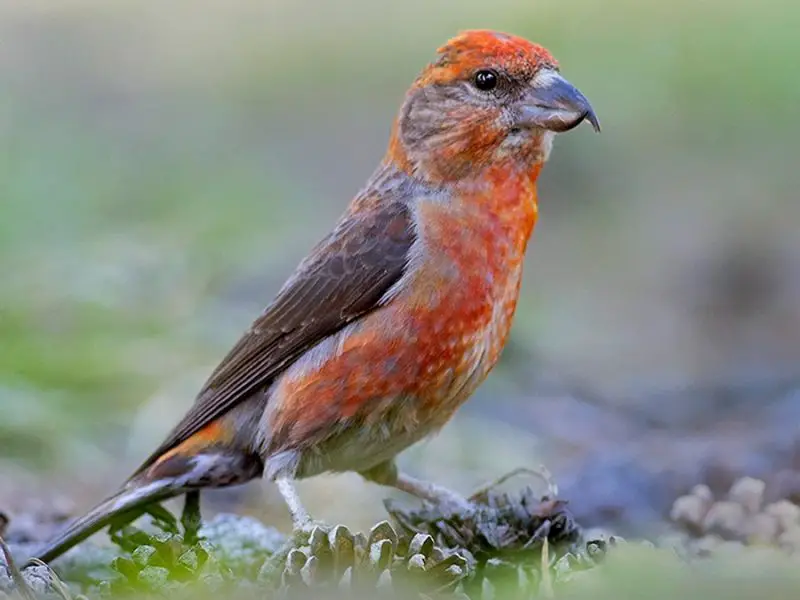
Identification: A Finch with a Twisted Secret
Physical Characteristics
At first glance, the Cassia Crossbill looks much like its Red Crossbill relatives—stocky, with a slightly notched tail and thick, seed-crushing bill. Males glow with hues of orange to red, while females wear muted olive and yellow-green tones. But the real hallmark lies in the bill itself: curved and crossed at the tips, like nature’s own pine-cone key.
This specialized bill allows the Cassia Crossbill to pry open tightly sealed lodgepole pine cones—cones that no other bird in this region can efficiently exploit.
How It Differs from Other Crossbills
Unlike Red Crossbills, which roam widely and show multiple bill and call variations (“types”), the Cassia Crossbill is non-migratory, genetically distinct, and vocally unique. Its call is softer and flatter than those of its wandering cousins, and its bill is slightly thicker and deeper, tuned precisely to its hyper-local diet.
Range and Habitat: A Bird Bound to One Forest
Geographic Range
The Cassia Crossbill is endemic to just a few high-elevation forests in the South Hills and Albion Mountains of southern Idaho. Its entire known range covers fewer than 70,000 acres, making it one of the most range-restricted birds in North America.
Nowhere else—no other mountain, forest, or state—can you find this bird in the wild.
A Specialized Habitat
These birds live almost exclusively in old-growth lodgepole pine forests, at elevations between 5,500 and 7,500 feet. These trees hold the secret to the bird’s survival and specialization. In this unusual ecosystem, cones stay sealed for years, holding on tightly to their seeds.
Why? Because here, one important seed predator is missing: the red squirrel.
An Evolutionary Arms Race—Without the Squirrel
The Squirrel that Wasn’t There
In most pine forests, red squirrels harvest and eat cones with ruthless efficiency. This predation forces trees to produce harder, more tightly sealed cones, which in turn pushes crossbills to evolve stronger, more specialized bills.
But in the South Hills and Albion Mountains, red squirrels are absent—a quirk of the region’s isolated glacial history. Without squirrels, the lodgepole pines evolved softer cones with slightly looser seeds. Over time, a local population of Red Crossbills became resident, foraging year-round and honing their bills and behavior to exploit this unique resource.
This crossbill population stopped migrating. It stopped interbreeding with nomadic types. It started to diverge, genetically and behaviorally, until it became a new species: the Cassia Crossbill, officially recognized in 2017.
A Perfect Match
Today, the Cassia Crossbill and the lodgepole pine cones in southern Idaho are in an intricate ecological dance—each shaping the other over millennia. The bird’s bill matches the cone’s seal strength almost exactly. It’s a striking example of coevolution, where two species evolve in response to each other’s adaptations.
Diet and Foraging Behavior
Pine Seeds, Pine Seeds, Pine Seeds
The Cassia Crossbill is a dietary specialist. Over 90% of its diet consists of lodgepole pine seeds. These seeds are protected by resinous cones that require strength, precision, and patience to open—something this bird has mastered.
Using its crossed mandibles, the Cassia Crossbill slips its bill between cone scales, twists to pry them open, and uses its tongue to extract the seed. It’s a slow, methodical process, repeated hundreds of times a day in treetop silence.
Occasional Dietary Flexibility
While lodgepole pine seeds are the staple, Cassia Crossbills may occasionally supplement with other conifer seeds or insects—particularly during breeding season when protein demands rise.
Breeding and Nesting
Year-Round Residents and Winter Nesters
Unlike many finches, Cassia Crossbills are non-migratory. They live in their forest year-round and often begin nesting in late winter or early spring, when seed availability and weather conditions align.
They typically nest high in conifers, building cup-shaped nests of twigs, moss, and grass. Females lay 3–4 eggs, incubating them for nearly two weeks. Both parents help feed the chicks with regurgitated pine seeds.
In good years, when cone crops are abundant, they may raise two broods.
Vocalizations and Communication
Unique Calls
Cassia Crossbills have a distinctive flight call, often described as “whit” or “chut”—a short, flat note that separates them from other crossbill types. Their vocalizations are important not only for flock cohesion but also for species identification.
Birders in Idaho often rely on call recordings to distinguish Cassia Crossbills from the more mobile Red Crossbill types that may occasionally wander into their range.
Conservation Concerns
Small Range, Big Risks
Though not currently listed as endangered, the Cassia Crossbill’s limited range makes it highly vulnerable to environmental changes. Just a single large wildfire, disease outbreak, or prolonged drought could threaten an entire population.
Climate change adds further risk. Warmer temperatures may increase the frequency of cone-opening (serotiny), releasing seeds prematurely and reducing food availability. Invasive insects, such as pine beetles, and increased fire frequency also loom as major threats.
Conservation Efforts
The U.S. Forest Service and researchers have begun monitoring Cassia Crossbill populations closely. Protecting large stands of mature lodgepole pine, managing fire risk, and minimizing habitat disturbance are critical to the bird’s future.
Because it’s so tightly bound to one ecosystem, preserving the forest means preserving the bird.
Why the Cassia Crossbill Matters
The Cassia Crossbill is more than just an Idaho oddity. It’s a vivid reminder of evolution at work—a species born from isolation, shaped by an absent predator, and finely tuned to a single resource. It’s a story about how life finds a way, even in narrow margins.
It also offers scientists a living laboratory for studying speciation, coevolution, and ecological balance. And for birders, it presents the thrill of finding one of North America’s most unique finches—an endemic gem perched quietly in the pines of southern Idaho.
Conclusion: A Finch Like No Other
In a world of global species and widespread birds, the Cassia Crossbill is a marvel of place—a finch that could not exist anywhere else. As long as Idaho’s lodgepole forests stand tall and undisturbed, this remarkable bird will continue to sing its pine-scented song through wind-shaped branches, hidden in plain sight, and bound forever to the trees that shaped it.


